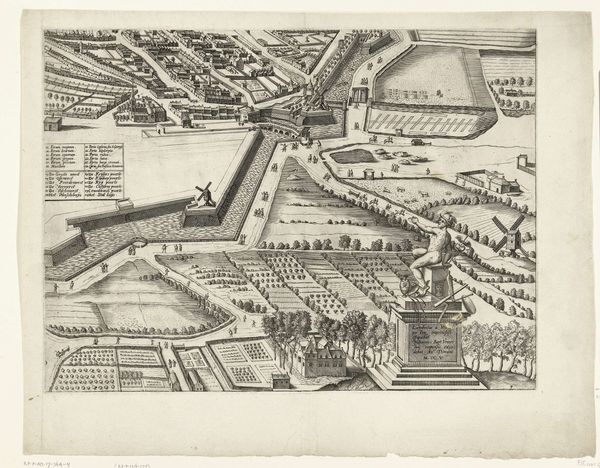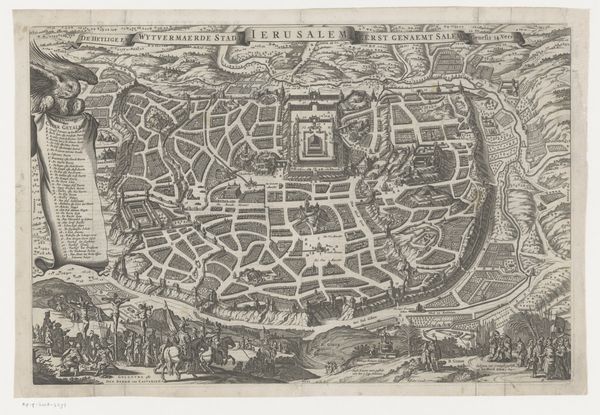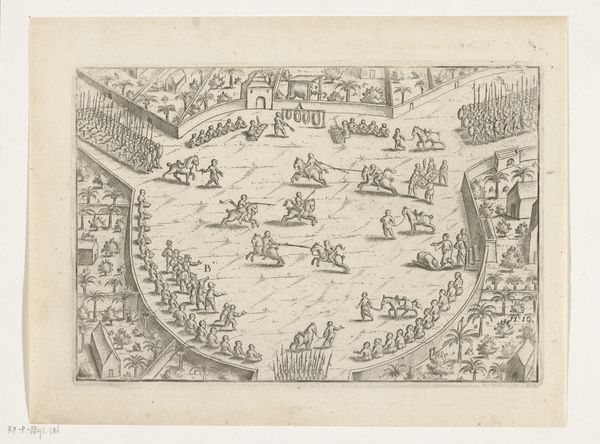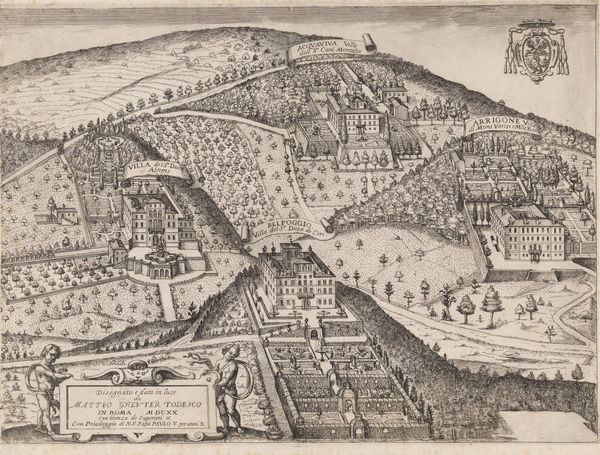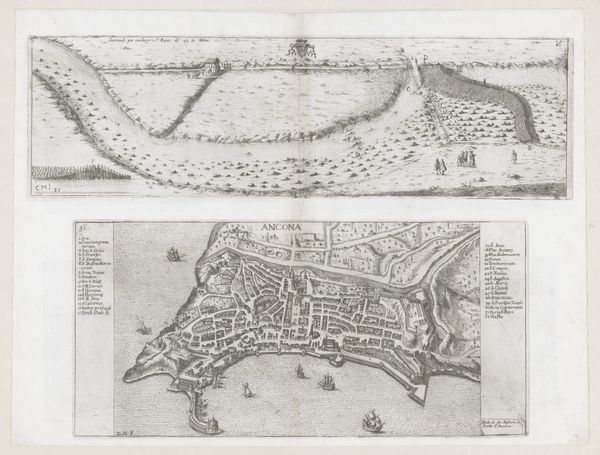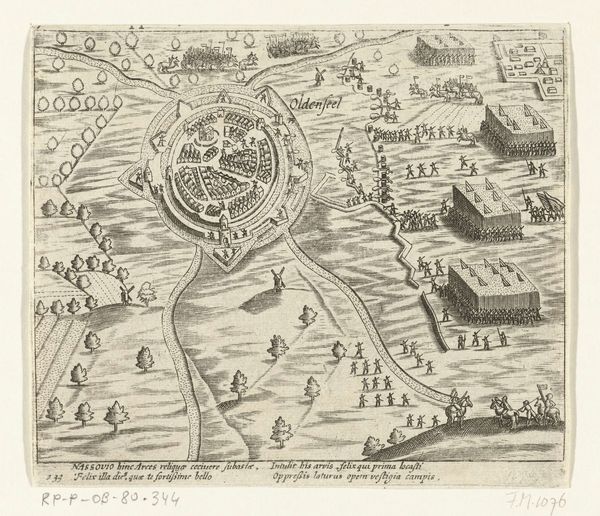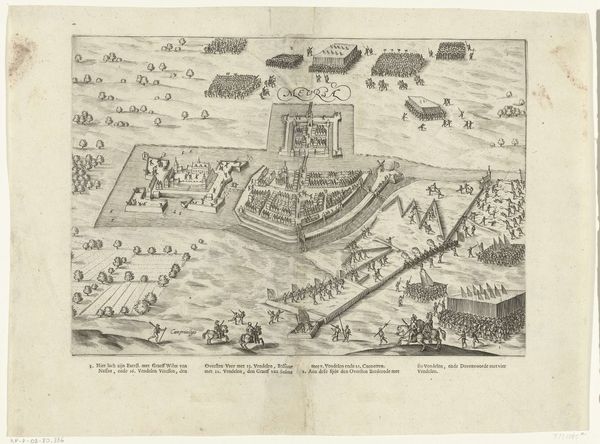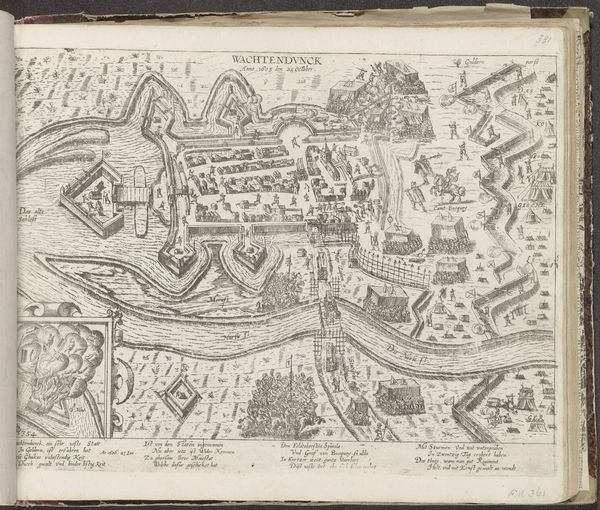
Tuinontwerp met tweeëntwintig aanzichten van tuinhuizen en watervallen in Engelse en Chinese stijl 1793
0:00
0:00
print, engraving, architecture
#
aged paper
#
toned paper
# print
#
old engraving style
#
sketch book
#
landscape
#
personal sketchbook
#
sketchwork
#
romanticism
#
pen-ink sketch
#
sketchbook drawing
#
storyboard and sketchbook work
#
sketchbook art
#
engraving
#
architecture
Dimensions: height 509 mm, width 657 mm
Copyright: Rijks Museum: Open Domain
Gotthelf Wilhelm Weise created this print, "Tuinontwerp met tweeëntwintig aanzichten van tuinhuizen en watervallen in Engelse en Chinese stijl" using etching. It depicts an ideal garden design featuring both English and Chinese architectural styles. The central map visualizes the layout of the garden, surrounded by detailed sketches of various structures, including pavilions, follies, and water features. Produced in the late 18th century, the print reflects the period's fascination with garden design as an expression of social status and cultural sophistication. The combination of English and Chinese elements highlights the era's interest in incorporating exotic, far-eastern motifs into European landscapes. The design of pleasure gardens was institutionalized in aristocratic society as a visual symbol of power, wealth and the intellectual embrace of diverse cultures. The historian can use sources like period garden design manuals and estate records to better understand the social values and cultural exchanges that influenced such designs. Understanding art means situating it in its social and institutional context.
Comments
No comments
Be the first to comment and join the conversation on the ultimate creative platform.
